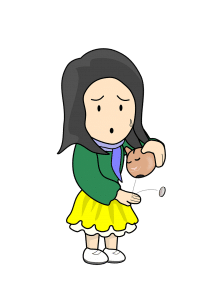Between the Christmas shopping season and the season of New Year’s resolutions, this time of year can get you thinking more about your finances. This can be especially true for older adults, since many of you are probably living on that old cliche of a ‘“fixed income.” And studies show that, more and more, seniors are having trouble making ends meet on that fixed income, so you might feel like you’re struggling financially these days.
There’s absolutely no shame in that: times are indeed tough, and inflation feels out of control. But there are things you can do to relieve some of the pressure, including looking into benefits offered by the government that can help keep you afloat. It turns out that a lot of older adults don’t even know that they’re eligible for these benefits, so we wanted to highlight them and give you options for keeping financially fit into the New Year and beyond.
Struggling Seniors

Here’s a shocking figure for you: 45% of aging Americans are struggling to make ends meet.
Not only that, but according to the National Council on Aging, one-third of senior households have no extra money and often end up in debt after meeting essential monthly expenses. That’s 6.4 million seniors living in poverty, many of whom aren’t just living paycheck-to-paycheck, but day-to-day, routinely shuffling their money around to meet the basics of life.
Furthermore, the NCA found that 2.1 million American seniors receive just $435 a month in social security. Not only that, but older women receive an average of $4,500 less annually due to the time taken off for caregiving and lower overall lifetime earnings. And, with these figures, it’s not surprising that according to projections, senior poverty will quadruple by the year 2050!
These dire statistics are certainly not the fault of seniors who are feeling the pinch. There are any number of reasons why so many older adults in this country don’t have enough retirement savings, like suffering a debilitating injury, having a low-paying retail job with limited or no retirement benefits, or being a single parent with limited lifetime earnings due to parenting duties.
Whatever the reason, there are a lot of older adults who are struggling, and you (or a loved one) might be among them. Again, there’s no shame in that! And, while there are a lot of government policies that need to change in order to keep more seniors from falling into poverty, there are actually government benefits that you can look into that can help you right now.
Are You Missing Out?
As we said, if you could use a little financial assistance, you’re not alone, but you’re also not alone if you’re not sure how to get it, or even if you didn’t realize it was available to you. For example, you might have heard of the Supplemental Nutrition Assistance Program, or SNAP, otherwise known as food stamps, but you might not know that you might be eligible for assistance with your groceries. Or did you know that there are programs that help with seniors’ healthcare costs?
While many of these programs are more likely to be geared toward very low-income seniors, you might be surprised to know that not all of them are only for those living in extreme poverty. That means you might be among the many older adults who are leaving benefits on the table. Just check out these numbers:
- Nearly 14 million adults aged 60 or older qualify for SNAP aid but haven’t signed up, according to recent estimates. In fact, the AARP Public Policy Institute estimates that 71% of adults aged 60 and above who qualify for the Supplemental Nutrition Assistance Program haven’t signed up for benefits.
- More than 3 million adults 65 or older are eligible but not enrolled in Medicare Savings Programs, which pay for Medicare premiums and cost-sharing.
- 30% to 45% of seniors may be missing out on help from the Medicare Part D Low-Income Subsidy program, which covers plan premiums and cost-sharing, and lowers the cost of prescription drugs.
Between the above and other benefits that are being left on the table, “Tens of billions of dollars of benefits are going unused every year,” according to Josh Hodges, chief customer officer at the National Council on Aging. That might be because older adults don’t know about these benefits, find the applications difficult or annoying, or feel uncomfortable about taking them.
But whatever the reason, if you’re not taking the benefits that are coming to you (after all, you paid for them your whole life!), you’re basically throwing money away. So let’s take a closer look at how you can get some financial help if you need it.
Getting Help
Still not sure? Or think you don’t qualify, or that applying for benefits won’t be worth it? Well, remember, even a few hundred dollars in assistance can make a world of difference if you’re living on a fixed income that makes it difficult to afford basics such as food, housing, transportation, and health care.
And as we said above, there are programs that aren’t actually means-tested (although lower-income seniors might be prioritized), including:
- Programs funded by the Older Americans Act, such as home-delivered meals and legal assistance for seniors facing home foreclosures or eviction
- Local programs, such as property tax breaks for homeowners, which are available to anyone over 65
So, if you’re ready to get some assistance, where should you start? You can first try talking to your local Area Agency on Aging. These organizations are devoted to helping older adults, and will perform a benefits assessment, or refer you to other organizations that conduct these evaluations. To get contact information for your local Area Agency on Aging, use the Eldercare Locator, a service of the federal Administration on Aging, or call 800-677-1116.
If you need a little encouragement to sit down and find out about your options, take a look at what the programs we mentioned above could have to offer:
SNAP
If you need help with groceries – and so many of us do, since inflation has hit an average of over 8% year over year – food stamps could be the answer. Think that they wouldn’t be worth it? Well, seniors living alone received an average of $104 in food stamps per month in 2019. And at least 3 million adults 50 and above with very low incomes could receive more than $200 a month, AARP estimates. That could make a big difference to your quality of life!
Medicare Savings Program
If you’re lower income and are having trouble meeting your healthcare expenses, try looking into the Medicare Savings Program. And remember, rules for who will qualify for this program vary from state to state, so it’s definitely worth checking to see if you can access this benefit. After all, at a minimum, Medicare Savings Programs will cover the cost of Medicare’s Part B premiums: $170 a month, or $2,040 annually, for most seniors. If you are very low income, you could also have cost sharing for medical services covered, as well.
Extra Help
If you need help paying for your medications, Extra Help is a subsidy program for the Medicare Part D prescription drug plan. These subsidies are worth $5,100 annually, according to the Social Security Administration. Currently, some seniors get only partial benefits, but that will change in 2024, when all older adults with incomes below 150% of the federal poverty level ($20,385 for a single person in 2022) will qualify for full Extra Help benefits.
If you’re interested in either of these ways to boost your healthcare dollars, but aren’t sure how to go about getting these benefits, try contacting the State Health Insurance Assistance Program in your state, the Medicare hotline, or your state’s department of aging, which can direct you to community organizations that help with applications.
LIHEAP
Need help with high energy bills this winter? Lower-income older adults can apply for the Low-Income Home Energy Assistance Program. Your local utility company may also provide emergency relief to seniors who can’t pay their bills.
Again, it’s always worth checking to see if you qualify for any of the above benefits, as well as the local benefits like the tax breaks we mentioned above.
It can be easy to feel overwhelmed. Overwhelmed by financial troubles, by the prospect of having to seek out help, by confusing applications, and by conflicting feelings about needing assistance. But so many of us are feeling the pinch these days, and there’s no need to feel ashamed to ask for help – that’s what it’s there for! And there’s no need to feel at sea when it comes to the help that’s available. Reach out and speak to any of the organizations we mentioned above, and get the benefits available to you, so you can lighten the load and move forward!
Co-written by Joanna Bowling

